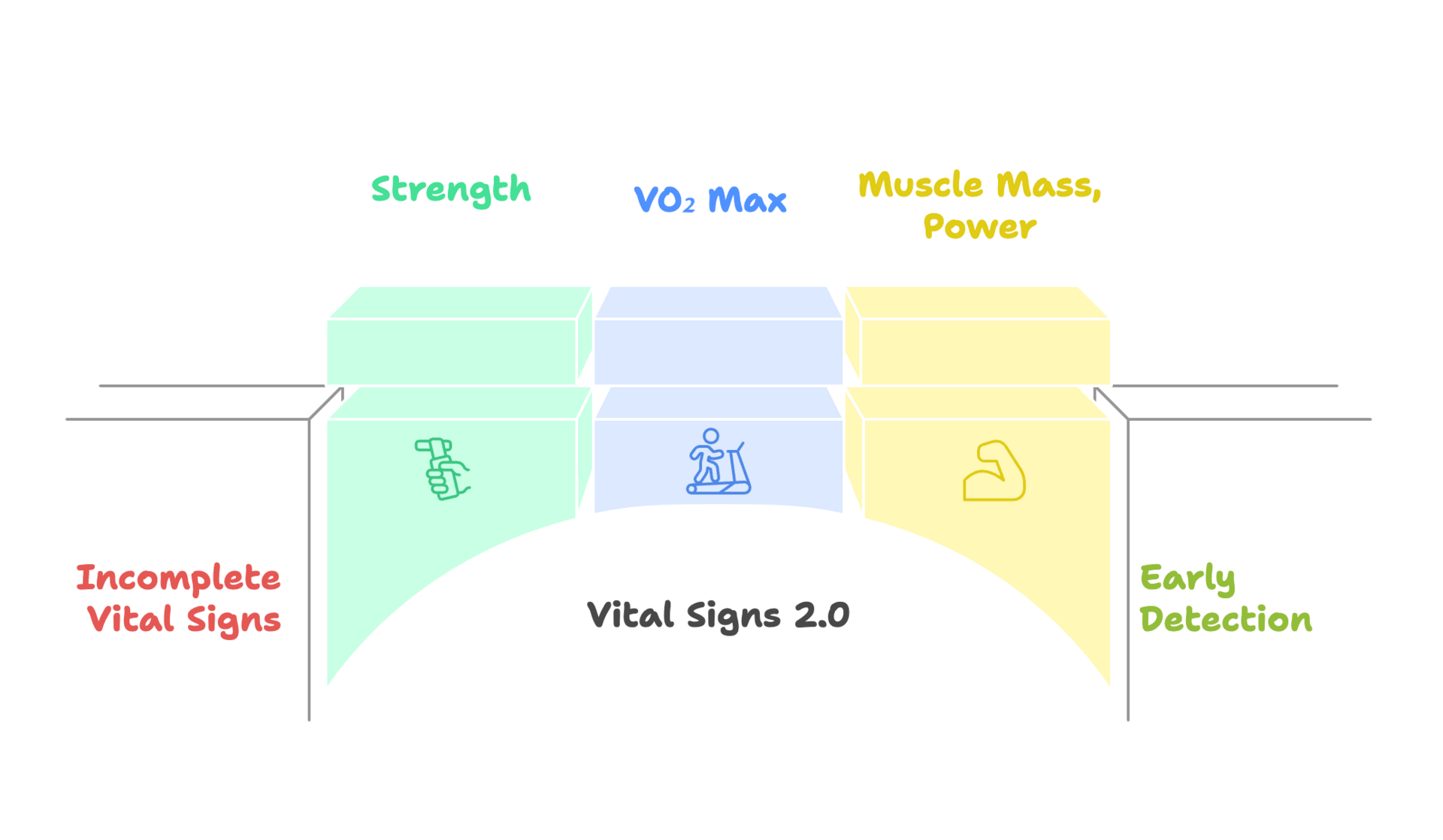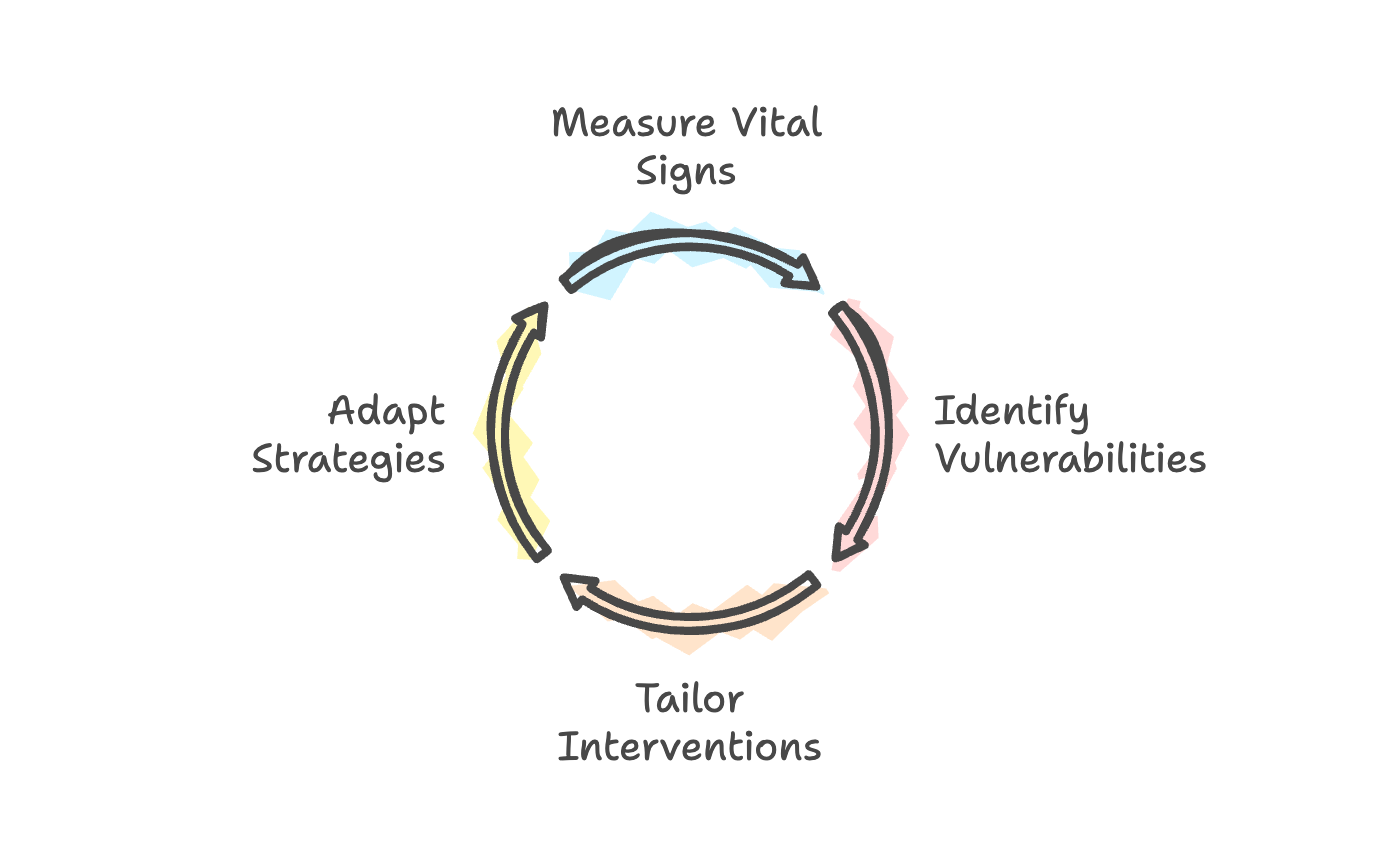- Vital Shift
- Posts
- What is a Vital Shift?
What is a Vital Shift?
Issue #18 · Read Time: 5 minutes
The Shift Within

Names carry weight.
This newsletter, “Vital Shift”, wasn't born in a marketing meeting or pulled from a hat of catchy phrases. It emerged from years of watching people fade—in hospital beds, nursing homes, palliative care units, and the quiet chambers where dignity goes to die.
Here, collapse isn't a moment. It's not a tragedy you can point to. It's drift, almost invisible—biological debt compounding since patients were in their 30s, until suddenly, it wasn’t invisible.
By the time these patients reach me, medicine only hands out conclusions, not choices; verdicts that don't come with appeals.
The name, Vital Shift, emerged from the gap between whispers and sirens.
Between the quiet signals your body sends decades before diagnosis, and the deafening alarms of a system built to react.
Between "what's broken" and "what's starting to fade".
Between episodic checkpoints and continuous awareness, where diagnosis isn't the first step, but an overdue insight.
These early signals demand we redraw medicine's maps and measure the terrain of vitality rather than mark the boundaries of disease.

The Shift in Measurement
The vital signs in your primary care doctor's office tell an incomplete story.
Blood pressure, heart rate, temperature; they're calibrated for one question: is something wrong right now?
These vital signs haven't changed in decades. They're still running version 1.0 in an age demanding smarter signals.
What we call "preventive" screening betrays its own promise. Routine markers like glucose, cholesterol, kidney function and electrolytes are checked with prevention in mind. Yet these indicators only move after disease has gained momentum—missing the quiet erosion of vitality that precedes it.
We've conflated late detection for early prevention; a confusion that costs decades of intervention opportunity.
Take diabetes.
We wait for HbA1c or fasting glucose to rise as if it's an early warning. It's not. It's the middle of a story that began with insulin sensitivity faltering, muscle mass eroding (or never built) and metabolism whispering warnings years before blood sugar learned to spike.
By then, you're not choosing. You're managing consequences.
Your body speaks in signals medicine hasn't yet learned to measure.
Grip strength forecasts cognitive decline decades before memory falters.
VO₂ max forecasts cardiovascular health and all-cause mortality risk decades before heart disease surfaces.
Muscle mass (or lack thereof) signals metabolic frailty long before blood sugar spikes.
These aren't fringe measurements. They're Vital Signs 2.0—predicting the same diseases we're trying to prevent, just far earlier in their story.
Such power creates two vital shifts: seeing these signals as essential, not optional, and recognizing they reveal decline long before traditional markers can.
Together, they mark the first tremors of a seismic shift—in precision, agency, and urgency.

The Shift in Precision
The next shift is about abandoning the vague prescription of "just eat healthy" and "exercise more" that's been passed down through generations of white coats.
"Just move" remains foundational, but the shift in precision is about seeing your body as a constellation of capacities, each with its own trajectory. Measure, adjust, adapt.
It means recognizing that your vulnerabilities aren't someone else's, and neither are your solutions.
You don’t just “exercise more” or “eat healthy.” You train to build a fortress around your vulnerabilities. You target the specific weaknesses that your vital signs reveal, long before the system would dare to call it disease.
If your muscle mass and strength are eroding, 10,000 steps per day won't fortify that vulnerability. The only step that will, is progressively heavier lifting, adequate protein, and recovery.
If your VO₂ max is declining, pilates or yoga won't reverse your trajectory. It requires a combination of steady-state cardiovascular training combined with an appropriate dose of high-intensity intervals.
If visceral fat is accumulating, simply “eating less” and cutting calories without preserving muscle solves one problem while accelerating another.
Every signal you measure tells you what to push, what to hold steady, what needs changing. Sometimes the right move is to eat more, sometimes less. Your plan bends to the signal, not generic advice.
But once these signals expose where resilience is eroding, a more fundamental question emerges: who makes the call on what to do?
This brings us to perhaps the most decisive shift of all: the shift in agency.

The Shift in Agency
The uncomfortable reality is that all the tracking, measuring, and understanding in the world changes nothing until you choose discomfort over convenience.
This is the shift that most people slam the brakes. They'll research endlessly. But the moment that data demands discomfort—progressive overload that burns, sprints that leave you gasping, saying no to late nights—suddenly they’re hiding behind browser tabs building a digital fortress of bookmarked articles they'll never read.
GLP-1s, peptides, and supplements are powerful allies, but they're supporting actors, not stars.
Your body responds only to the choices you make daily and the limits you push consistently, long after motivation has evaporated.
Precision is worthless if your mindset is still outsourced and disengaged. If you wait for a siren, for the pain that makes it non-negotiable, for a crisis that eliminates other options…you’re too late.
The moment you try to oversimplify health into absolute statements and silver bullets, you've already begun the process of self-betrayal. Shifting agency means refusing both extremes: the paralysis of endless research and the false comfort of oversimplification.
No expert, no matter how credentialed, can do the hard work of integrating conflicting information into a cohesive approach that addresses your specific vulnerabilities.
The burden of final integration and translating it into sweat and sacrifice, remains yours. The weight of developing this judgement isn't an optional accessory. It's the price of admission to a future where your body still answers when called.

When the Shift Becomes Vital
The idea of a Vital Shift, cuts deeper than semantics.
"Vital" pulses with both urgency and non-negotiability. It's the space where your story is still in draft form, where edits remain possible.
“Shift” is the move from spectator to author. It’s when you see the chasm between the absence of disease and presence of vitality.
Most of the regret I see in medicine comes from people who mistook comfort for safety, who assumed there would always be more time. But time doesn't send calendar invites for when decline begins.
The moment a doctor delivers a diagnosis isn't the beginning of the battle. It's the echo of a fight that was won or lost decades ago.
The most powerful kind of care isn’t the kind that rescues you. It’s the kind that never needed to.
Vital Shift—both the ethos and this newsletter—stands as a warning and invitation. It’s the recognition that the most profound changes happen in the territory between whisper and siren, while options still outweigh consequences.
The window between these signals stays open as long as we deserve, but not as long as we hope. The clock starts ticking long before we hear it.
This newsletter sharpens your awareness of vital signals while they still speak softly.
Make the vital shift before your drafts become permanent.

I'm a Toronto doctor caring for older adults in hospitals and nursing homes, while spending my spare time digging into longevity science. I'm here to share what I'm learning. No fancy jargon, just practical insights to help you read your body’s early signals. Think of me as your friendly guide, figuring this out alongside you. Medicine has changed, but how we practice it hasn't caught up. That's why I'm here: to help you edit your health story while the early drafts are still open.
Reply